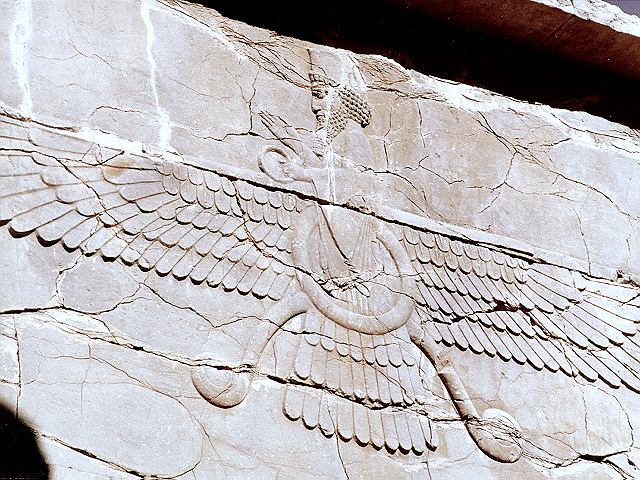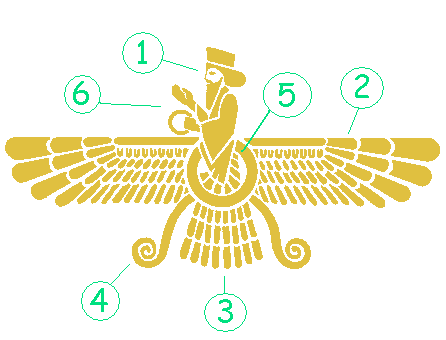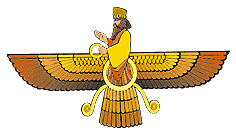F A R A V
A H A R
The most powerful spiritual symbol of
True Iranians

What "Faravahar" meant to the
ancient Iranians who carved it on stones is that it represents
Zartosht's principles of “Good Thoughts, Good Words and Good Deeds”.
Zartosht (Zarathustra), the
greatest Iranian teacher and philosopher was a messenger of peace, good life, and eternal love. Zartosht never
assumed prophethood or said that he had been missioned to bring any
message from God to human beings. He
recognized his God on the basis of
knowledge and wisdom. Zartosht believed that there is some kind of intelligence (Ahura Mazda) working
its way through nature and based his philosophy on Good Deeds, Good Thoughts and Good Words.
He united ancient Iranians into a way of life that guided them to glorious
time of prosperity and happiness for
centuries (Persian Empire). Zartosht was a great Iranian spiritual
leader of profound and lasting significance.
The significance
of the Faravahar, true Iranian symbol

1.
The figure inside is that of an old man, representing wisdom of age. 2.
There are two wings in two sides of the picture, which have three main
feathers. These main feathers indicate three symbols of "good
thoughts, good words, and good deeds," which are at the same time
the motive of flight and advancement. 3. The lower part of the Faravahar
consists of three parts, representing "bad reflection, bad words
and bad deeds" which causes misery and misfortune for human beings.
4. There are two loops at the two sides of the Faravahar, which
represent positive forces and negative forces. The former is
directed toward the face and the latter is located at the back. This
also indicates that we have to proceed toward the good and turn away
from bad. 5. The ring in the center symbolizes the eternity of universe
or the eternal nature of the soul. As a circle, it has no beginning and
no end. 6. One of the hands points upwards,
indicating that there is
only one direction to choose in life and that is forward. The other hand holds a
ring and some interpreters consider that as the ring of covenant and
used in
wedding ceremonies representing
loyalty and faithfulness which is the basis of Zartosht's philosophy. This means when a true Iranian gives a promise, it is like a
ring and it
cannot be broken.
Since, the ring of covenant which located in the center of the
Faravahar's trunk is the symbol of the immortality of the spirit, it can
be inferred that more human beings try to promote their own Faravahar,
more their spirit will be elevated in the other world after they pass
away. For that reason, ancient Iranians would never mourn at the death
of their beloved ones, because they would believe that their spirit will
be elevated to a higher level in the other world. On the basis of
one's Faravahar, everybody is responsible for his/her own deed.

Dorood
to Iran, Iranians and Farhange Iran
It is time
for IRANIANS to be True IRANIAN


